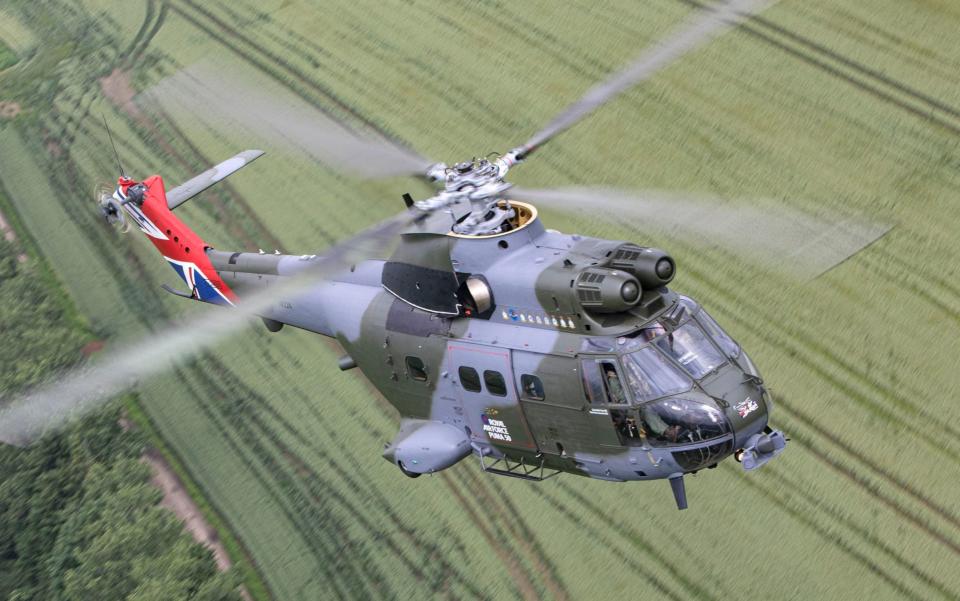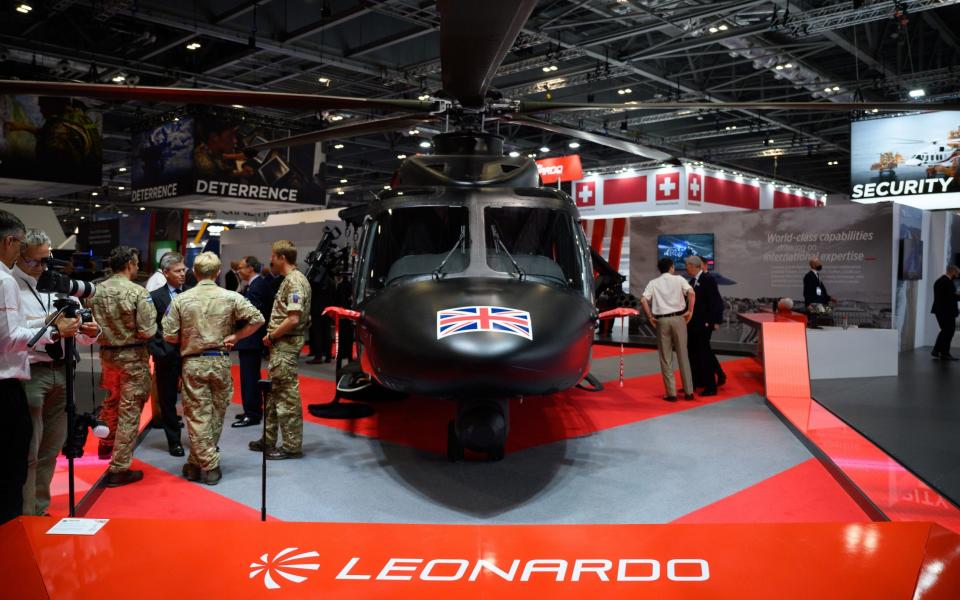Airbus skirmishes with Italian rival in battle for MoD helicopter contract

Airbus has hit out at an Italian rival for “dangling carrots” over UK investment as the two companies battle to win a major helicopter contract from the Ministry of Defence.
Leonardo, which owns AgustaWestland, has promised to invest £1bn in Britain if its bid to replace the ageing fleet of Puma medium-lift helicopters in 2025 is successful.
However Colin James, the UK boss of Airbus Helicopters, said his company invested about £300m a year in the UK, where it makes wings and landing gear for civilian aircraft.
“I haven’t heard [Leonardo] say what that £1bn will be used for, and I haven’t heard them say in what time period we’re talking about,” said Mr James.
“But what we can unequivocally say is that in any three-year period, Airbus is doing £1bn of investment in the UK and we’re not in the business of dangling carrots.”
Leonardo is pitching its AW149, a purpose-build military helicopter that first flew in 2009. It touts the model as ready to be available quickly should it be chosen.
Nick Whitney, UK chief of Leonardo Helicopters, said: “We have an in-service product, it’s military off-the-shelf. It can be produced in relatively short order timescales.

Leonardo owns Britain’s sole military helicopter factory in Yeovil. “Ours is already done, theirs isn't, so you've got inherent risk,” he added.
Airbus says it will design a military version of its H175 civilian aircraft that is sold as a transport for heavy users such as the oil and gas industry.
It insists this is the better plan since it will be able to custom-build the helicopter around the MoD’s demands rather than buying a craft designed around Italian specifications. Leonardo has said it will build a helicopter fit for the UK’s needs.
Choosing Airbus would also mean a second helicopter factory in the UK, making Britain more of a centre for selling the craft, it argued.
Both companies touted lower costs for taxpayers since each has a related civilian version that can be used for training. They are both big suppliers to the MoD and keen to show that training costs can be slashed through the use of control systems familiar to Royal Air Force pilots.
The successful bidder will have access to an export market that could be worth up to 550 orders, with the UK as a primary customer – a very useful marketing tool.
The MoD will host a “market interest day” on Thursday to deliver more information to potential bidders.
The contract for 36 to 44 aircraft could be worth up to £1bn.
Defence contractors are cognisant of the fact that military contracts come with the expectation of local jobs. Each is offering up to 400.
Leonardo would build a new production line at Yeovil at the historic home of Westland helicopters, and Airbus would make the helicopters at its site in Broughton near Chester.
The Puma was introduced in the early 1970s and replaced the 1950s-era Westland Whirlwind, which was a licenced build of the US Sikorsky Chickasaw. Its first major deployment was in Zimbabwe, overseeing the ceasefire after which Robert Mugabe became prime minister.
It was also deployed in Northern Ireland, Belize and during British manoeuvres during the Desert Shield and Desert Storm operations in the liberation of Kuwait from Iraq in 1991.
However, it struggled in hot conditions at altitude in Afghanistan, according to an RAF assessment of its history. It was thus upgraded from 2012 to extend its life and power with new engines and other improvements.

 Yahoo Finance
Yahoo Finance 